Key takeaways
- Mastering enhances clarity and balance, ensuring music sounds great across various listening platforms.
- Proper preparation, including leaving headroom and organizing sessions, significantly improves mastering results.
- Using AI platforms like LANDR simplifies mastering while allowing for customization to capture the track’s essence.
- Listening on multiple devices and choosing the right export formats are crucial for maintaining audio quality post-mastering.
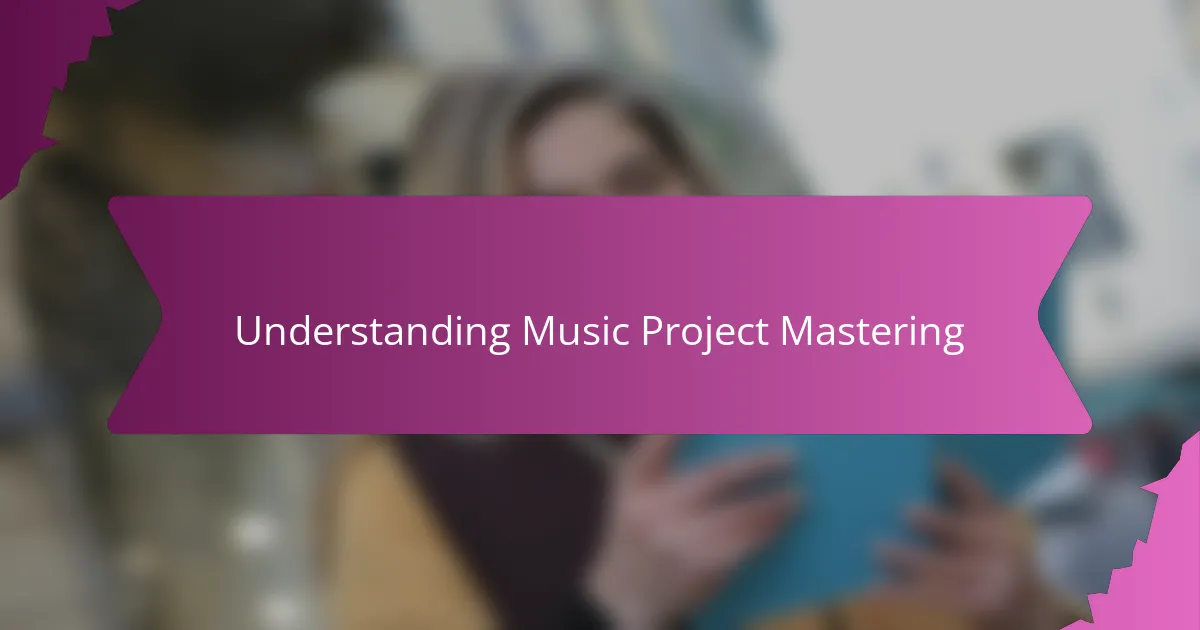
Understanding Music Project Mastering
Mastering a music project often feels like that final brushstroke on a painting—it can transform good work into something truly polished. I remember the first time I heard a mastered track and thought, “Is this what professional magic sounds like?” That clarity and balance are exactly what mastering aims to achieve.
You might wonder why mastering is so important when mixing already balances the instruments. From my experience, mastering ties everything together, ensuring the track sounds great across all listening platforms—whether it’s earbuds, car speakers, or a club system. It’s the step that gives your music a competitive edge.
When I started mastering my own projects, I realized it’s not just technical—it’s also about trusting your ears and understanding how subtle tweaks can breathe life into a track. Have you ever heard a song that felt flat, then played a mastered version that suddenly hit different? That’s the power of mastering in action.
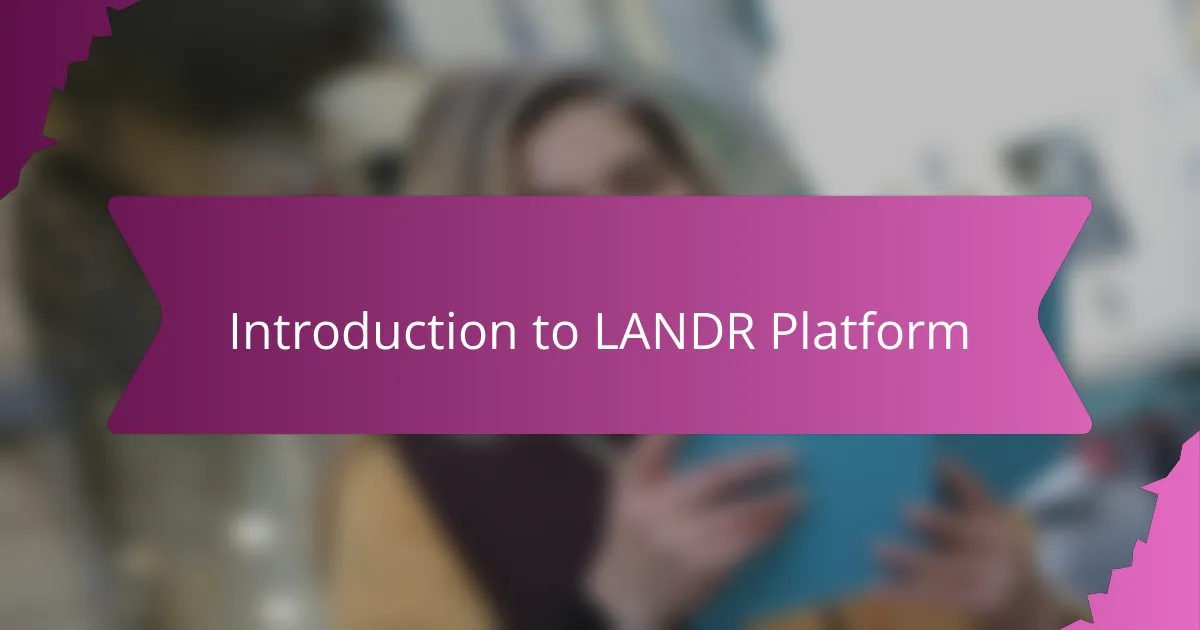
Introduction to LANDR Platform
LANDR caught my attention because it promised professional-quality mastering without needing a full studio setup. I was curious—could an AI-driven platform really understand the nuances that I heard in my tracks? After trying it out, I found the process surprisingly intuitive and accessible.
What I liked most about LANDR is how it simplifies mastering into a quick, straightforward step while still offering customization options. It felt like having a skilled engineer at my fingertips, ready to polish my music anytime. Have you ever wished for that kind of flexibility when refining your tracks?
Another thing that stood out was how LANDR continuously updates its technology using machine learning. This means it’s always evolving to match current sound standards, which gave me confidence that my music would stay relevant and competitive in a fast-changing industry.
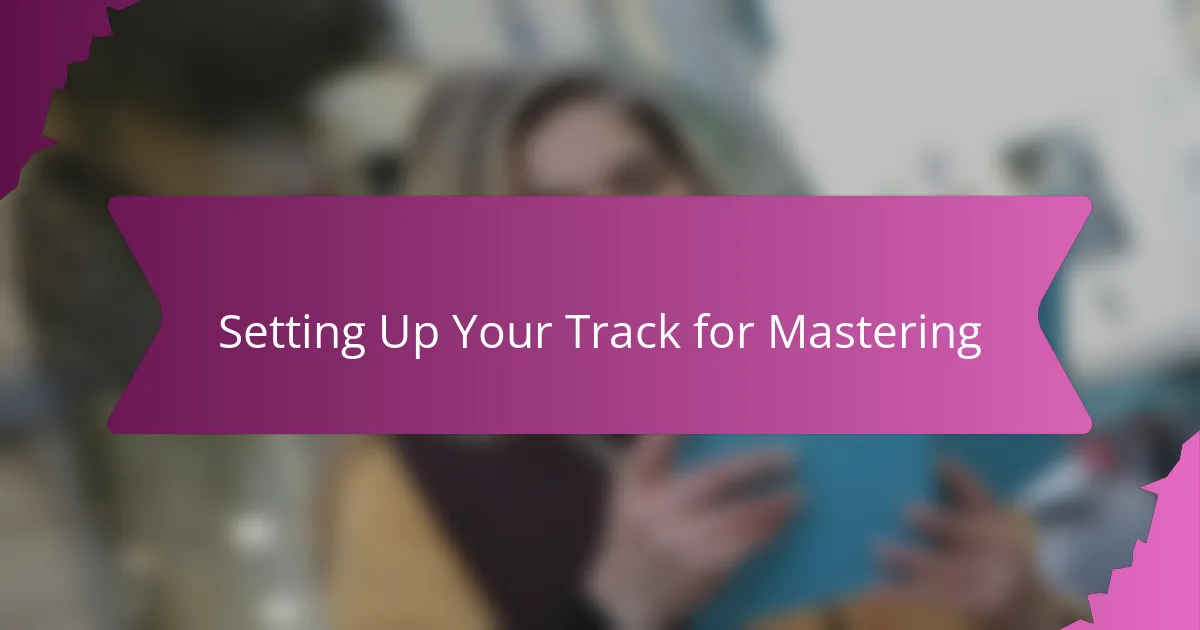
Setting Up Your Track for Mastering
Getting your track ready for mastering isn’t just about clicking export and sending it off. I learned this the hard way after rushing a session, only to find the final master lacked punch. Taking the time to properly bounce your stems—making sure they’re clean, without clipping, and with some headroom—makes a world of difference. Have you ever noticed your mix sounded compressed or distorted after mastering? That usually means the levels were too hot from the start.
Another thing I consider crucial is organizing my session clearly before exporting. Labeling tracks, consolidating edits, and removing unnecessary plugins helps LANDR’s AI focus on the core of the sound. I ask myself: Is my mix as balanced as possible without relying on mastering to “fix” things? Setting your track up this way doesn’t just help the mastering process—it saves you from frustration down the line.
Lastly, I always check that my mix’s dynamic range is intact before mastering. Sometimes, over-compressing during mixing can squash the life out of a track, leaving little room for the master to work its magic. Early on, I didn’t realize this and got masters that felt lifeless. Have you ever wanted your song to breathe more? Leaving some natural dynamics allows LANDR to enhance rather than fight your mix.
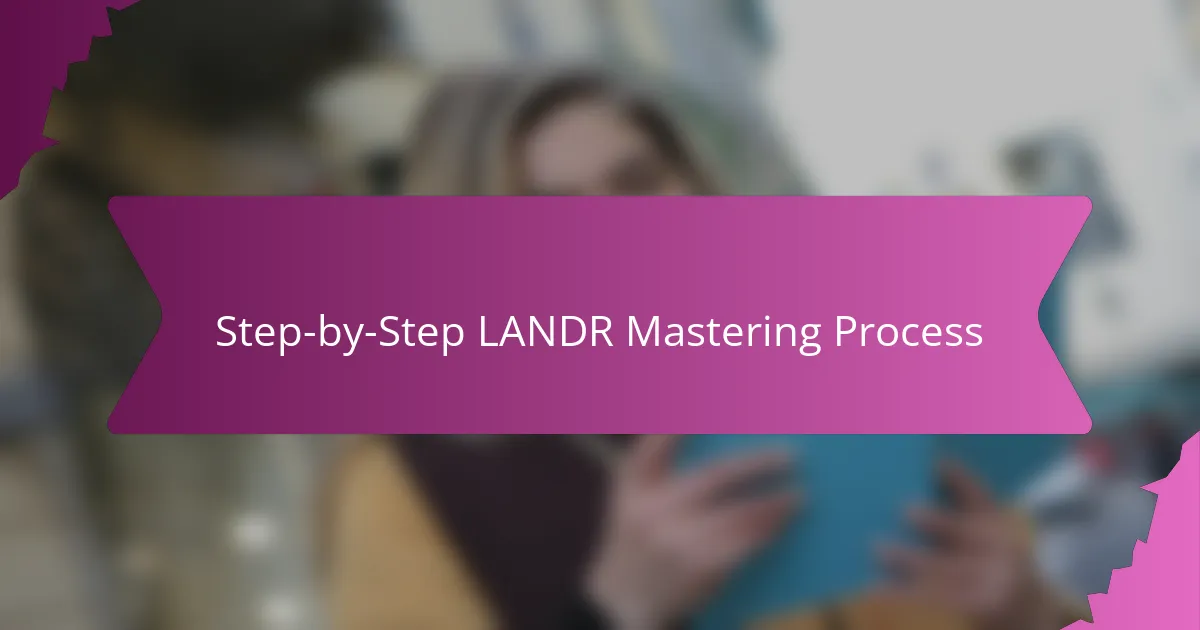
Step-by-Step LANDR Mastering Process
When I first uploaded a track to LANDR, I was a bit nervous about trusting an AI with something so personal. The platform guides you through each step—starting with choosing the mastering style that fits your genre and vibe. I remember thinking, “Will this preset really capture my track’s soul?” But the options are surprisingly flexible, letting you adjust intensity and tone until it sounds just right.
Next comes the uploading and analysis phase, which feels almost like magic. LANDR quickly scans your file, assessing frequencies, dynamics, and loudness. I’ve seen how this automatic evaluation highlights weaknesses I hadn’t caught myself, like a subtle muddiness in the low end or a harshness that needs smoothing. It’s like having a second pair of ears who never gets tired.
The final step is previewing and tweaking. This is where you really get to experiment and trust your judgment. I often A/B my original mix against LANDR’s master, asking myself, “Does this version uplift my track without losing its character?” Most times, minor tweaks in the interface help me find that perfect balance—giving me confidence that my music is ready to shine anywhere.
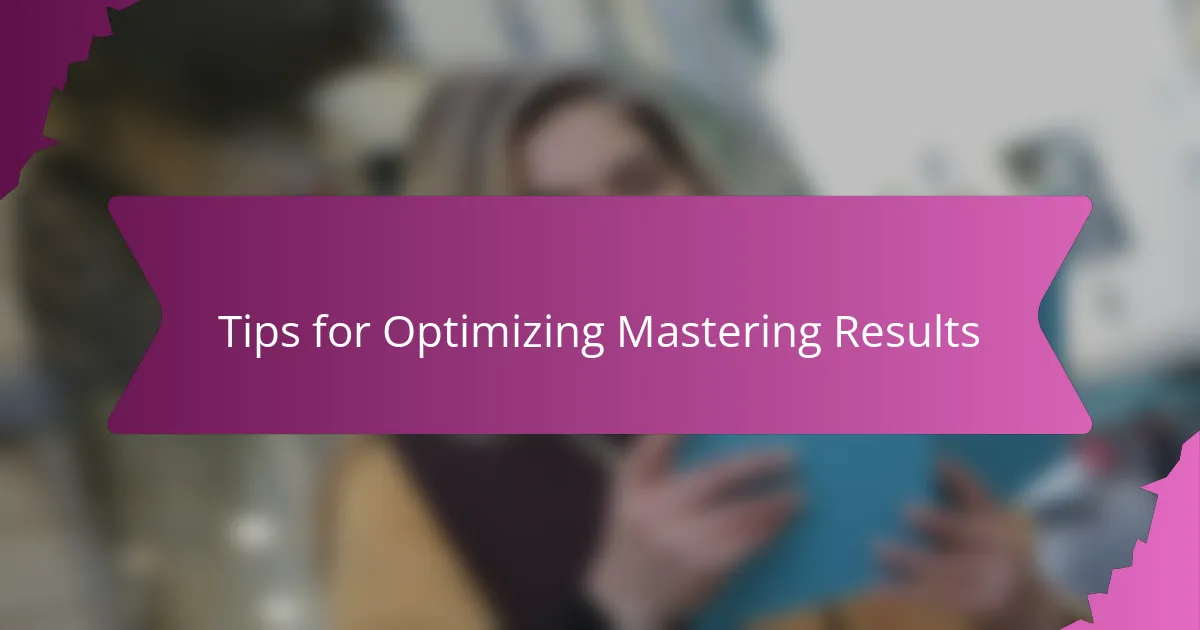
Tips for Optimizing Mastering Results
One thing I quickly learned is that mastering isn’t just about pushing a button and hoping for the best. I found that feeding LANDR a track with proper headroom—leaving space below 0 dB—really changed the game. Have you ever noticed how a track sounds squashed when it’s too loud before mastering? Giving that breathing room lets the AI enhance dynamics without distortion.
I also discovered that being patient during the tweaking phase paid off. At first, I tried picking the loudest preset, thinking “more volume means better,” but it often made my track feel harsh or fatiguing. Adjusting intensity and style settings slowly helped me find a sweet spot that preserved the emotional feel of my music. Have you ever had a mastered track sound louder but lose its warmth? That’s a common pitfall I now avoid.
Finally, I learned the value of trusting my ears over visuals. LANDR provides helpful meters and frequency graphs, but I found myself constantly comparing the master with my original mix on different speakers. This personal check made all the difference because mastering is as much about how the music makes you feel as it is about numbers. After all, isn’t that what music is all about?

Common Challenges and Solutions
Mastering my tracks with LANDR wasn’t without hiccups. Early on, I struggled with trusting an AI to shape my sound—would it understand my vibe or just make everything sound generic? It took a few tries and some tweaking before I realized that the presets are a starting point, not a strict rule. Have you ever felt stuck between letting technology do its job and holding onto your own artistic instincts? Balancing that was key for me.
Another common challenge I faced was dealing with mixes that weren’t quite ready. I once sent what I thought was a solid mix to LANDR only to hear clipping and harshness in the master. That frustrated me because it felt like the platform wasn’t working. But after I cleaned up my mix and gave more headroom, the results improved dramatically. It taught me that no matter how smart the AI is, good input equals good output—doesn’t that make sense?
Lastly, learning to fine-tune the intensity and style sliders was a game changer. I used to push for maximum loudness, thinking louder meant better, but that only led to tiring, harsh masters. Gradually, I learned to listen closely and dial back the extremes, letting the music breathe. Have you ever noticed how a track that’s too compressed loses its emotional impact? Finding that balance took patience, but it made all the difference in mastering success.
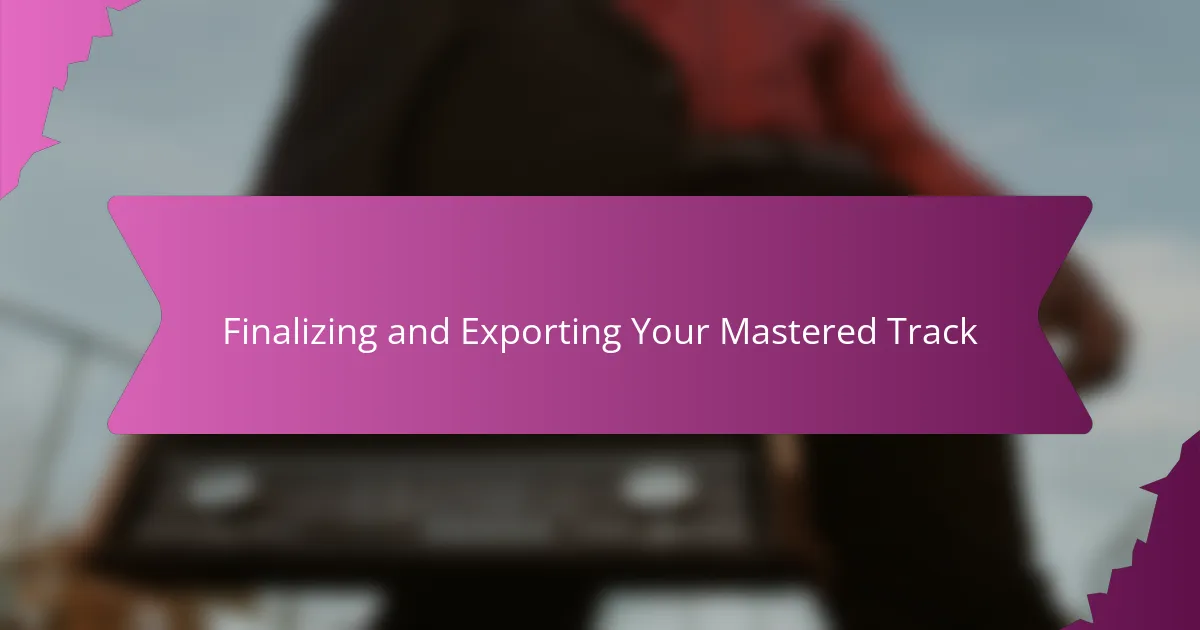
Finalizing and Exporting Your Mastered Track
When it came time to finalize my mastered track on LANDR, I realized the importance of listening carefully to the exported file on various systems. Have you ever grabbed your phone or laptop and thought, “Does this sound consistent everywhere?” Making sure the master translates well from one device to another gave me confidence that my music was truly polished.
Exporting felt straightforward, but I quickly learned that choosing the right file format and settings mattered a lot. For instance, opting for a high-quality WAV instead of an MP3 preserved all the detail LANDR had enhanced. I remember a time when I rushed this step, only to find my song lost clarity when uploading to streaming platforms—a simple export tweak solved that for good.
Lastly, I always double-check track metadata and volume normalization settings before finalizing. It’s easy to overlook these details, but they make a huge difference in how the track presents itself publicly. Have you ever uploaded a mastered track and noticed it surprises you with its volume level on Spotify or Apple Music? Adjusting export options can save you from that frustrating experience.